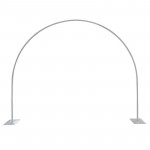Glycerin 101

Glycerin 101
When dying flowers (if I'm not using my usual water to paint the mixture), glycerin is one of my favorite ingredients! However, I frequently field inquiries regarding the purpose and appropriate usage of glycerin. I, therefore, wanted to respond to all of your inquiries and share our best glycerin advice with you!
What is glycerin?
Cosmetics and skincare products both frequently contain glycerin as a component. In fact, there's a strong possibility that you currently possess glycerin! It is a moisturizing agent that is made from vegetable oils.
What can glycerin do for your wood flowers?
Your flowers will tend to dry out if you paint them without using glycerin. If you treat them too roughly, they may even break the blossoms because they are delicate and brittle.
Your flowers will be softer and more malleable if you add glycerin to your paint mixture. Glycerin can even be used to compress flowers, and it will work just fine! Just watch out not to use too much glycerin. Your flowers may then have an oily texture on the outside and feel as though they are never thoroughly dried.
The OYL preferred ratio
I've done a lot of testing, and my ideal water-to-glycerin ratio is 8 to 1. I've tried using more and less glycerin in my experiments, and I've found that an 8-to-1 water-to-glycerin ratio produces the desired soft, pliable effect!
How Do I Use It?
Method 1: mixing it with your paint
In a resealable container, mix 4 cups water with ½ cup glycerin. Keep in mind that glycerin is syrupy and viscous, so you might need a popsicle stick to remove everything!
Stir everything well. The mixture will begin to cloud over. That is the water and glycerin combined.
When you're finished, use this to mix your paint (I prefer acrylic, but latex works just as well) instead of water. After that, dip-dye as usual to create supple, soft flowers!
A few brief observations:
- Before using the combination, I prefer to give it a good shake to ensure that everything is dispersed equally.
- Tap water works just great, though you can use purified water if you'd like.
- Water at room temperature is satisfactory. It is not necessary to heat or boil the water before combining.
Before using, let the flowers dry for a full day.
Method 2: a post-mix spray
Let's say you did not use a glycerin mixture when you dip-dyed your flowers. You discovered later that your flowers were a touch fragile and brittle. How do you proceed?
The same 8:1 ratio that we previously showed may be used to create a glycerin mixture that can be used in a spray bottle! Take your flower and give it a suitable spray. We haven't discovered the glycerin spray mixture that will cause the paint to run or transfer, so don't worry about over-spraying.
And if you end up with some on your hands, no worries! Your hands will genuinely feel lovely and soft after using it—that's a crafty bonus!
Your flowers should be dried and ready to be crafted after about 24 hours!
Things to remember
Don't be scared to try new things! Though I discovered that the 8:1 ratio worked best for me, don't be afraid to try other ratios! Just keep in mind that adding additional glycerin could lengthen the drying process and that adding too much could give the impression that the flowers are never dehydrated.
We have only ever used glycerin derived from vegetables. Using Dawn dish soap as a softener is another option that some sola artists prefer. We would much instead use glycerin as our softener because we didn't get the best results with that.
A very crucial note: please do not use glycerin and your airbrush together! Because airbrushing doesn't saturate your flowers the way dip-dying does, the texture of your airbrushed flowers should already be softer and more akin to a raw flower. When applying glycerin to airbrushed flowers, just follow the previously described spray technique once the paint has dried.
That's it, too! I hope the future is full of soft, malleable, squishy blossoms for you all. Happy creating!








